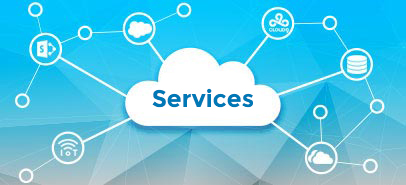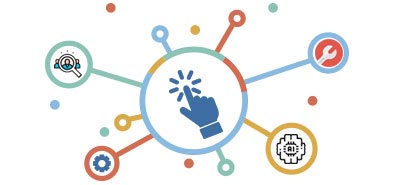How to Conduct a Successful Data Strategy Assessment in 2026
This guide is a simple map. It shows you how to run a data strategy assessment in 2026. You will learn what an assessment is. You will also see its main parts. We give you a step-by-step plan. This plan helps you check your data today, set goals for tomorrow, and make a real plan to get there. The main goal is to change your data from just stuff into a real asset. An asset that helps you make better choices and grow your business.
Introduction
Just collecting data is not enough. We all know this. The real work is making that data useful. You need it to be a strategic asset (a valuable tool) that helps you grow. The problem is, many companies find this hard. They often have data silos (data trapped in one team). They have poor data quality. And they have no clear plan. These problems stop them from making smart, data-driven decisions. This is where a data strategy assessment comes in. It is the first, most important step to fix these issues. It gives you a clear picture of what you have now. And it builds the foundation for a strong data-driven culture.
What is a Data Strategy Assessment?
So, what is a data strategy assessment? Think of it as a careful check-up. It’s a full review of your company’s data. This includes the people, the processes, the systems, and the infrastructure (the tech that holds it all). Its main purpose is to see if your data management helps you meet your business goals.
This check-up finds your strengths. It also finds your weaknesses and new opportunities. Once you understand where you are today, you can build a custom roadmap. A map to a future where you use data in a smart, strategic way. In the end, a good assessment makes sure you have the right data, of the best quality, ready at the right time.
This supports your biggest business goals and gives you an edge over competitors. This whole process is a key part of any good analytics strategy framework.
Data Strategy Assessment Components
A complete data strategy assessment looks at a few key areas. This gives you a full picture of your data landscape. It’s important to look at all of them. If even one of these parts is weak, your whole data structure could fail.
1. Data Governance
Data governance is all about responsibility. It defines who owns the data. It answers: Who is responsible for its quality and safety? What rules are in place to keep it trustworthy? If you don’t have clear governance, you risk compliance problems (breaking rules) and messy data management. Checking this is a big part of the data and assessment process.
2. Data Quality
Good decisions need high-quality data. It’s the cornerstone (the basic, most important part). If your data quality is poor, maybe it’s wrong or not complete, you will get bad insights. This leads to very costly mistakes. The assessment finds where these problems happen. It could be when data is first typed in, during storage, or when it’s moved. Then, it helps you build processes to stop these problems. This makes sure your assessment data analysis and reporting is correct and reliable.
3. Data Architecture
Your data architecture is the foundation. It supports your whole data system (your ecosystem). It decides how data flows, where it is stored, and if your systems can even handle your business needs. A good assessment maps this flow. This makes sure the flow matches what your business actually needs. To learn more, it is helpful to know the ideas behind a modern data warehouse. It shows how it supports a strong architecture.
4. Data Utilization
This part checks how well your company uses data. Are you turning raw data into real, actionable insights? (Insights are new, useful ideas). For example, are you using data to see future trends? Or to make your operations better? Or to give customers a better experience? If your data is just sitting there, doing nothing, you are missing big opportunities. Checking this is a key part of a data consumption strategy assessment.
5. Technology and Infrastructure
You need the right tools and platforms to meet your goals. That’s clear. However, expensive software is totally useless if you don’t have a good strategy. This part of the assessment makes sure your technology purchases fit your real needs. It stops you from wasting money. It also makes sure your tools can actually do what you bought them for. This is where knowing the difference between a Data Lake vs Data Warehouse can be very important.
How to Conduct a Data Strategy Assessment (Step-by-Step)
A good data strategy assessment uses a simple, three-step process. This process is very structured. It helps you understand your data situation now. Then, it helps you define your goals for the future. Finally, it helps you create a smart plan to get from “now” to “the future.”
Step 1: How Do You Assess Your Current State?
The first step is to get a perfect understanding of your data world today. This means talking to key people (we call them stakeholders) from both IT and business teams. You need to find out the main business goals. You also need to find the current problems and any specific ways data could be used to help. You should ask key questions like: What are your biggest business goals? What problems do you have right now with your data and analytics tools? A full data assessment here gives you a starting point (a benchmark). You can use it to measure your success later.
Step 2: How Do You Define Your Future State?
Okay, so you understand your current situation. The next step is to picture the future. This means finding out how data can be used better to support your long-term goals. In this step, you should define your key metrics (KPIs, or ways to measure success). You will also prioritize the best ways to use your data. And you will design a future-state Data Warehouse Architecture. This design will include specific technology suggestions. This step is how you create your main data strategy document.
Step 3: How Do You Bridge the Gap?
You now have a clear view of your current state and your future state. The last step is to build the roadmap. This is the plan that shows how to get from one to the other. To do this, you break down the big “future state” design into smaller, logical projects. Then, you put them in order (prioritize them) based on two things: how much they help the business and how hard they are to build. This method helps you find high-value projects that give you “quick wins.” This is great because it lets you see real value right away from your data driven assessment strategies.
What is the Role of a Data Strategy Assessment?
A data strategy assessment has a very important job. Its role is to help change your company into a data-driven one. It gives you a clear snapshot of your data. It finds all the places you can improve. By using the findings from a data analytics assessment, businesses can make much better decisions. Why? Because the decisions are based on correct and trustworthy data. The assessment also finds weaknesses, like data silos or processes that don’t work well. Then it gives you specific plans to fix them. In the end, a strong data strategy makes you more competitive. It helps you create new things (innovate) and react faster to changes in the market. This is exactly why many companies look for data strategy and assessment services to help guide them.
What are Some Examples of a Data Strategy Assessment?
You can see the positive effect of a good data strategy assessment in many industries. For example, think of a large healthcare provider. They had data problems after buying several other companies. They used an assessment to update their architecture. This helped them create one single, unified view of patient data. The result? Easier integration and better care for patients. Here’s another one: a talent acquisition firm (a hiring company). They developed a roadmap. This plan not only improved how they used data inside the company. It also helped them create new ways to make money from their data. This is a great data strategy example of turning data into profit. These examples show how a real data assessment plan can lead to real business success.
How Beyond Key Empowers Your Data Strategy
At Beyond Key, we focus on building systems that give businesses a real advantage. Since 2008, our data warehouse consultants have helped companies all over the world, including Fortune 500 companies. We help them develop platforms that bring together all their different data sources into one central place.
We help you modernize your data infrastructure. We add advanced AI/ML capabilities (Artificial Intelligence / Machine Learning). This makes sure you can use the full power of your company’s data. You can get real results and make smarter, faster business decisions. Our data warehouse consulting services are built to help you with your future needs.
Conclusion
In 2026, using data is not just a nice idea. It is necessary to survive and grow. A complete data strategy assessment is the first step that makes this change possible. It gives you the clarity and the direction you need. It helps you move from just collecting data to strategically using it. By checking your current state, picturing a clear future, and building a real roadmap, you can unlock the true value of your data. You can build a culture of making smart decisions. And you can get a competitive advantage that lasts. This is what makes good data strategy and assessment services so very valuable.
Frequently Asked Questions
1. What is a data strategy assessment?
A data strategy assessment is a full review of a company’s data assets, processes, and technologies. It checks how well data is lined up with business goals. It also finds chances to improve. The result is a roadmap. This map guides the company to use data better and make smarter decisions.
2. Who should be involved in a data strategy assessment?
A good assessment needs teamwork. You need people from both business and IT. This includes leaders who can explain the business goals, IT leaders who know the technology, data architects, and the business users who work with the data every day. Having all these people involved makes sure the final strategy works technically and helps the business.
3. How long does a data strategy assessment take?
The time a data strategy assessment takes can change. It depends on the company’s size and how complex it is. Usually, it can take from a few weeks to a couple of months. The process includes interviews, workshops, and analysis of the current data setup. This is all done to deliver a complete and useful plan.
4. What are the outcomes of a data strategy assessment?
The main result is a custom data strategy roadmap. This document lists out projects in order of importance. It includes technology suggestions, cost estimates, and a timeline to get it all done. It also includes a clear business case (the “why”) for the strategy. Plus, it finds “quick wins” that can give immediate value to the company. This sets you up for long-term success with best practices for data warehousing.
5. What is the cost of data warehouse implementation?
The cost to implement a data warehouse for your business changes a lot. It depends on factors like: choosing cloud vs. on-premise (your own servers), the amount of data, how complex your data sources are, and the tools you pick for ETL (moving data) and analytics. Cloud solutions often have “pay-as-you-go” pricing. This can be cheaper than the big, upfront cost needed for on-premise hardware.












